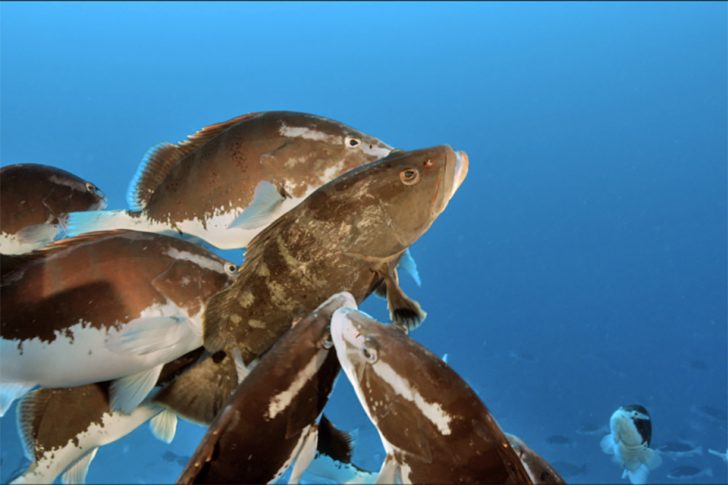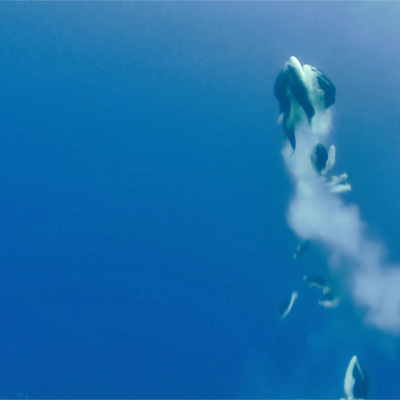
From December through March, Nassau grouper spawn in large breeding groups in the tropical waters of coastal Florida and the Caribbean. These groups consist of thousands of fish that collectively gather in predictable locations for the sole purpose of reproduction. Unfortunately since 1980, they have been overfished, leading to an 80 percent loss in the population in some locations. NOAA Fisheries scientists, managers, and our partners collectively are implementing regional strategies for the protection and conservation of Nassau grouper. Two new videos—one for decision makers and one for local fishermen—promote the conservation of Nassau grouper spawning aggregations.
NOAA Fisheries listed Nassau grouper as threatened under the Endangered Species Act in 2016 and is dedicated to its conservation. Take and possession of Nassau grouper have been prohibited in U.S. Caribbean federal waters since 1990. NOAA Fisheries is a member of the Spawning Aggregation Working Group, which was created by the Western and Central Atlantic Fishery Commission. Nassau grouper travel hundreds of miles crossing international borders to breed in large spawning aggregations; therefore, recovery efforts must be a collaboration across their range. We support a harmonized regional approach to sustainably manage Nassau grouper.
These spawning aggregations are the only known period when Nassau grouper spawn. The working group advocates letting breeding fish “off the hook” by closing fishing and sales of Nassau grouper from December to March. Removing adults has a compound effect of losing reproductive output and a decline in abundance can lead to the long-term loss of the spawning aggregation. This no-take period protects the spawning adults and at the same time safeguards population replenishment and recovery.

The greatest threat to Nassau grouper is harvesting fish during the spawning season. These fish aggregate to spawn; they congregate in a small area making them easier to catch. When the fish are caught during their spawning season, both the adults and their potential offspring are removed. Therefore, successful reproduction and recruitment is essential to the conservation of Nassau grouper—adults must continue to spawn to provide larvae.
Source: https://www.fisheries.noaa.gov